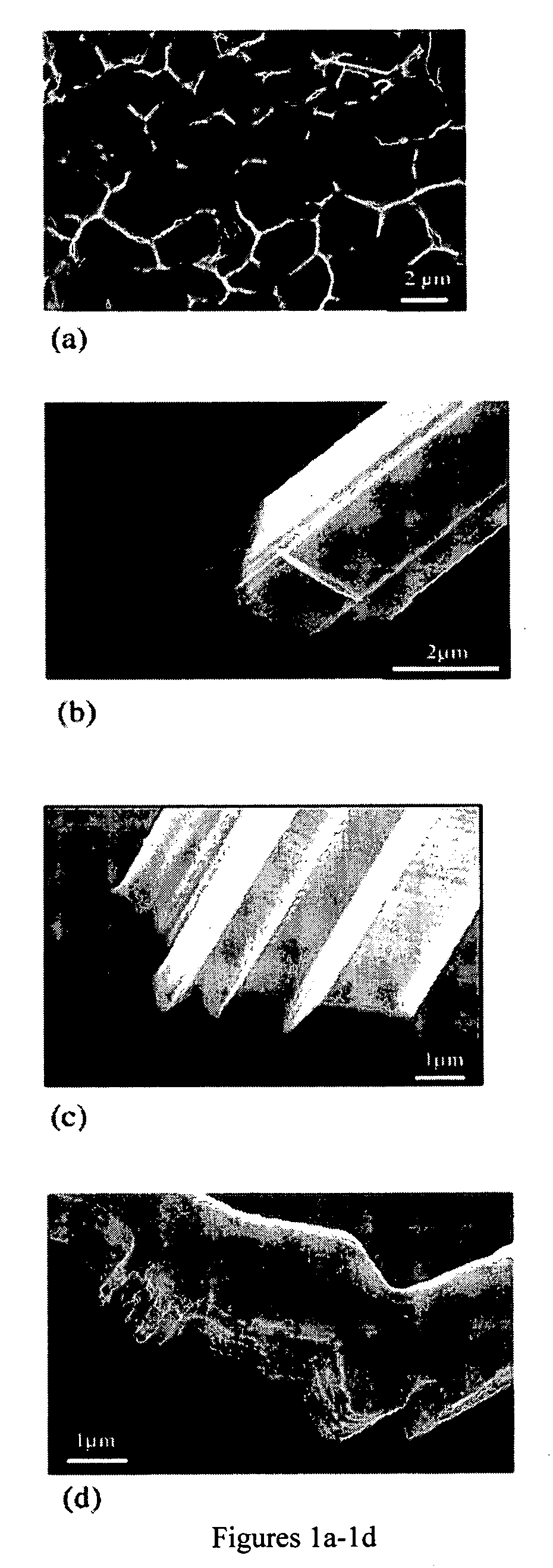Reduction of spontaneous metal whisker formation
a technology of metal whisker and metal whisker, which is applied in the direction of printed circuit, printed circuit manufacturing, conductive pattern reinforcement, etc., can solve the problems of metal whisker, electrical shorts, catastrophic equipment loss, etc., and achieve the reduction and/or prevention of metal whisker formation, and the effect of preventing metal whisker formation
- Summary
- Abstract
- Description
- Claims
- Application Information
AI Technical Summary
Benefits of technology
Problems solved by technology
Method used
Image
Examples
example 1
[0043] To determine the effect of atmosphere on whisker growth, a sample was sectioned in two; each half was cold mounted and polished down to 60 nm silica. One sample was sealed in an evacuated borosilicate glass tube; the other was exposed to the atmosphere. After three months, the glass tube was broken and the surface of the sample held in air (FIG. 2a) was compared to the surface of a sample held in the evacuated tube (FIG. 2b). From these figures it is clear the sample held in air had significantly more whisker activity than the sample held in the evacuated tube. The whiskers found on the sample exposed to ambient atmosphere were also significantly longer than the hillocks that formed on the evacuated sample (compare FIGS. 2a and 2b).
[0044] The results shown in FIG. 2 are important because they tend to show that the driving force for whisker formation is a reaction between either oxygen and / or nitrogen in the atmosphere, and unreacted In.
example 2
[0045] A 50 wt. % Al—Sn alloy was melted and chill cast by pouring into a metal dish. After polishing, one sample was sealed in an evacuated glass tube, and another was held in air after a portion of its surface was coated with nail polish. Two weeks later, the polymer coating was dissolved in acetone and all three surfaces, the uncoated surface held in a vacuum, the uncoated surface held in air and the coated surface held in air, were examined. In all cases, small Sn hillocks were observed. The density of the Sn hillocks was higher in the surface exposed to air and whiskers appeared exclusively on surfaces exposed to air.
[0046] These results show that the driving force for whisker growth is a component of air, namely, oxygen or nitrogen. This driving force manifests itself as a reaction between oxygen or nitrogen and the metal. Since no nitrogen was found in the whiskers of the present example, and oxygen is more reactive than nitrogen, it was concluded that the whiskers formed in...
PUM
| Property | Measurement | Unit |
|---|---|---|
| Temperature | aaaaa | aaaaa |
| Temperature | aaaaa | aaaaa |
| Percent by mass | aaaaa | aaaaa |
Abstract
Description
Claims
Application Information
 Login to View More
Login to View More - R&D
- Intellectual Property
- Life Sciences
- Materials
- Tech Scout
- Unparalleled Data Quality
- Higher Quality Content
- 60% Fewer Hallucinations
Browse by: Latest US Patents, China's latest patents, Technical Efficacy Thesaurus, Application Domain, Technology Topic, Popular Technical Reports.
© 2025 PatSnap. All rights reserved.Legal|Privacy policy|Modern Slavery Act Transparency Statement|Sitemap|About US| Contact US: help@patsnap.com



